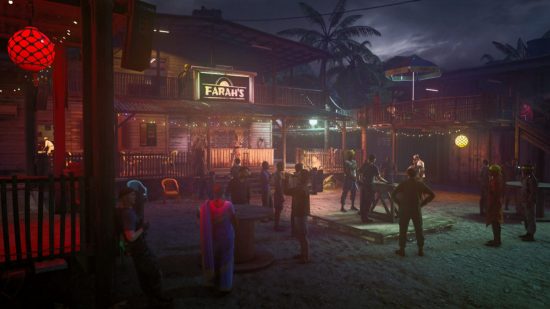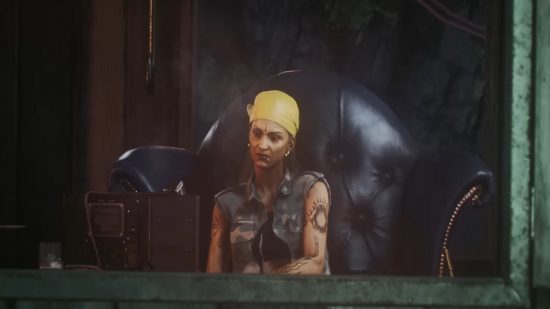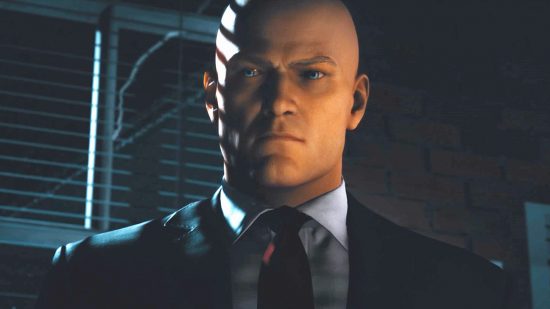Ambrose Island, the new Hitman 3 map, is out now and takes Agent 47 to a location rather different from what he’s used to. Gone are the mansions of Sapienza and the clean, efficient laboratories of Chongqing. In their place is a rugged, lawless environment where smugglers and pirates clash and 47 learns a bit more about his erstwhile companion, Lucas Grey.
PCGamesN spoke with Kevin Goyon, IO Interactive’s live game director for Hitman 3, about how the team brought Ambrose Island to life and what opportunities creating such a remote setting opened up for design and storytelling.
Goyon says the process of deciding where to locate a new Hitman map is typically a lengthy, multistep one, where the team considers ideas they haven’t pursued before, however radical, and what might be the most exciting for players. The first new map in Hitman 3 came together rather more smoothly than expected, though.
“In the case of Ambrose Island, we rapidly settled on a pirate fantasy and the possibility to feature fans’ favourite Lucas Grey in the story, leading us to the Andaman Sea,” he says. “One direction we wanted to explore was to make a location that felt dangerous – but where 47 would belong.”

As with any good Hitman map, Ambrose Island and its factions center around the key targets 47 must dispatch. This time, Goyon and his team leaned heavily on Hitman’s story and came up with Akka the pirate queen and Noel, a criminal mastermind mentioned as far back as the Paris level in the trilogy’s first instalment. These two were also born from IOI’s desire to explore Grey’s background and what happened to the pirate syndicate from Mumbai.
“The targets that emerged were related to our desire to explore what happened to the Militia after Lucas Grey left it, during the events of the previous games in the trilogy,” Goyon says. “So we started looking for hooks in his story and found it interesting to explore who could have taken over the leadership of the militia, but also hint at the past relationship with the Maelstrom’s (a central character in the Mumbai location) pirate syndicate at large.”
Deciding who they should be is just part of the challenge. The next step is figuring out how they should be. “Evil” is a given, Goyon says, since the point of clearing a stage in Hitman is feeling good about taking out dreadful people who harm others. Deciding what shape that evil takes is more complicated, though, and involves experimenting with different routes – ones that have to take them near death points in a natural way – and different interactions and conversations that help emphasize why 47 is there to finish them off.
Goyon says setting the new story on an island was an easy choice, and its natural boundaries made it easier for the team to establish the map’s area without coming up with artificial borders. The more significant challenge came from figuring out how to turn the island’s overgrown jungles and natural biomes into a proper Hitman level.

Other outdoor maps in Hitman, such as Santa Fortuna and even Mumbai, still revolve rather heavily around built-up areas – strongholds, marketplaces, and the like. Ambrose Island features a coastal settlement, but much of the map is completely untamed, which makes reading its paths and interactive areas more difficult than in the trilogy’s more developed settings.
Goyon and the team played to the setting’s natural strengths to help overcome the issue, creating a rocky topology that let them divide the map into distinct zones and experiment with verticality more than they usually could.
While the setting might have proven challenging at times, Goyon says it also let the team indulge one of their favorite mechanics: creating rival factions and setting Agent 47 loose in their midst.
“Quite often, the team is attracted to the idea of having rival factions in a location, but that’s not something our game was designed to support,” Goyon says. “We decided to explore through the idea that our two factions on the island, the militia and the pirates, are on the brink of a conflict. It actually allowed us to create a rich lore and interesting situations – leading to one of our favourite kills-by-proxy, where (spoiler alert!) you can get one target to push the other to their death.”
As for what’s next in Hitman 3 and its two-year roadmap, Goyon says the team is focused on finishing Freelancer Mode, the roguelike mode that pieces together maps and challenges at random, and the devs hope that it provides plenty of reasons to revisit maps old and new.
